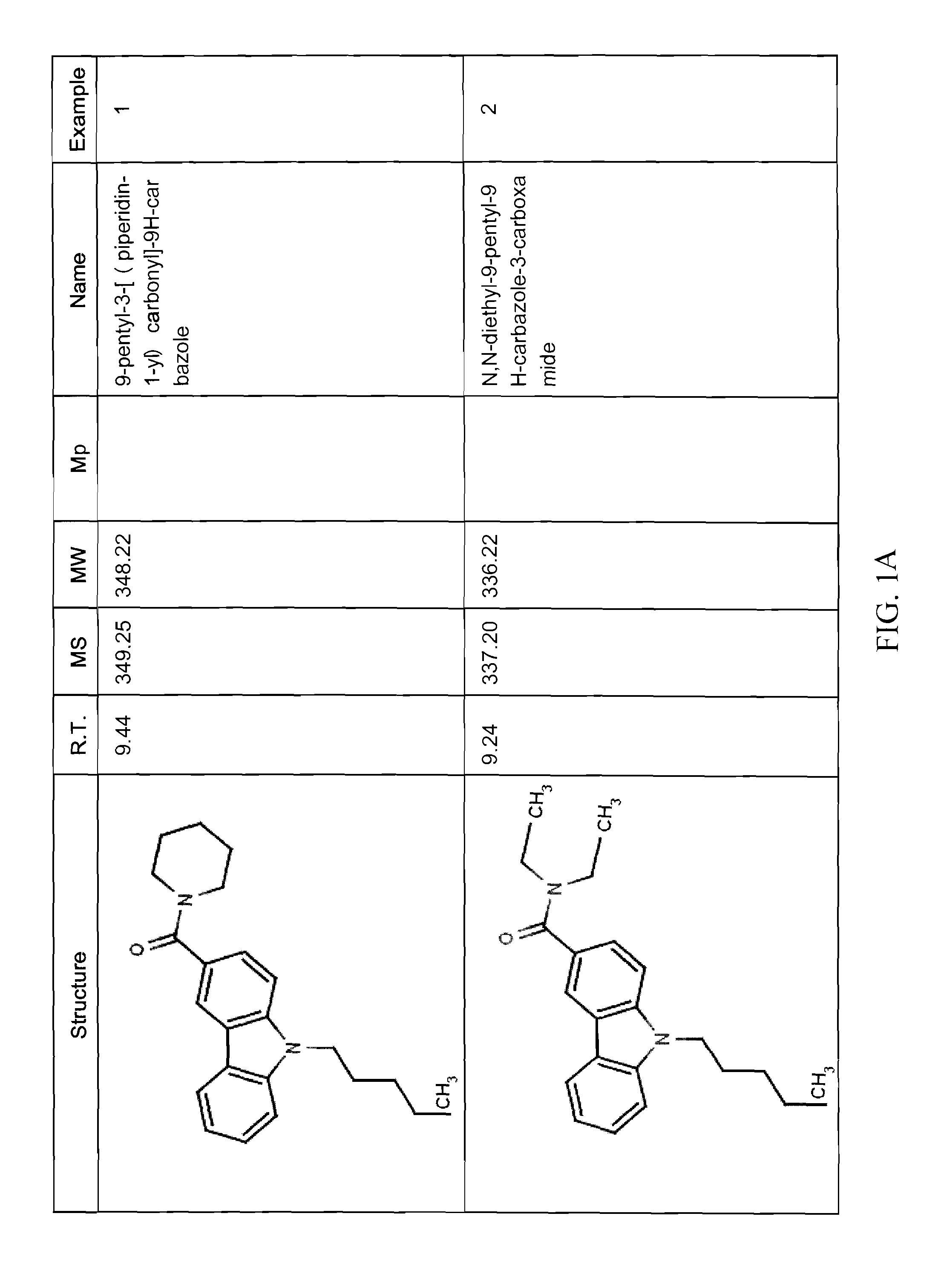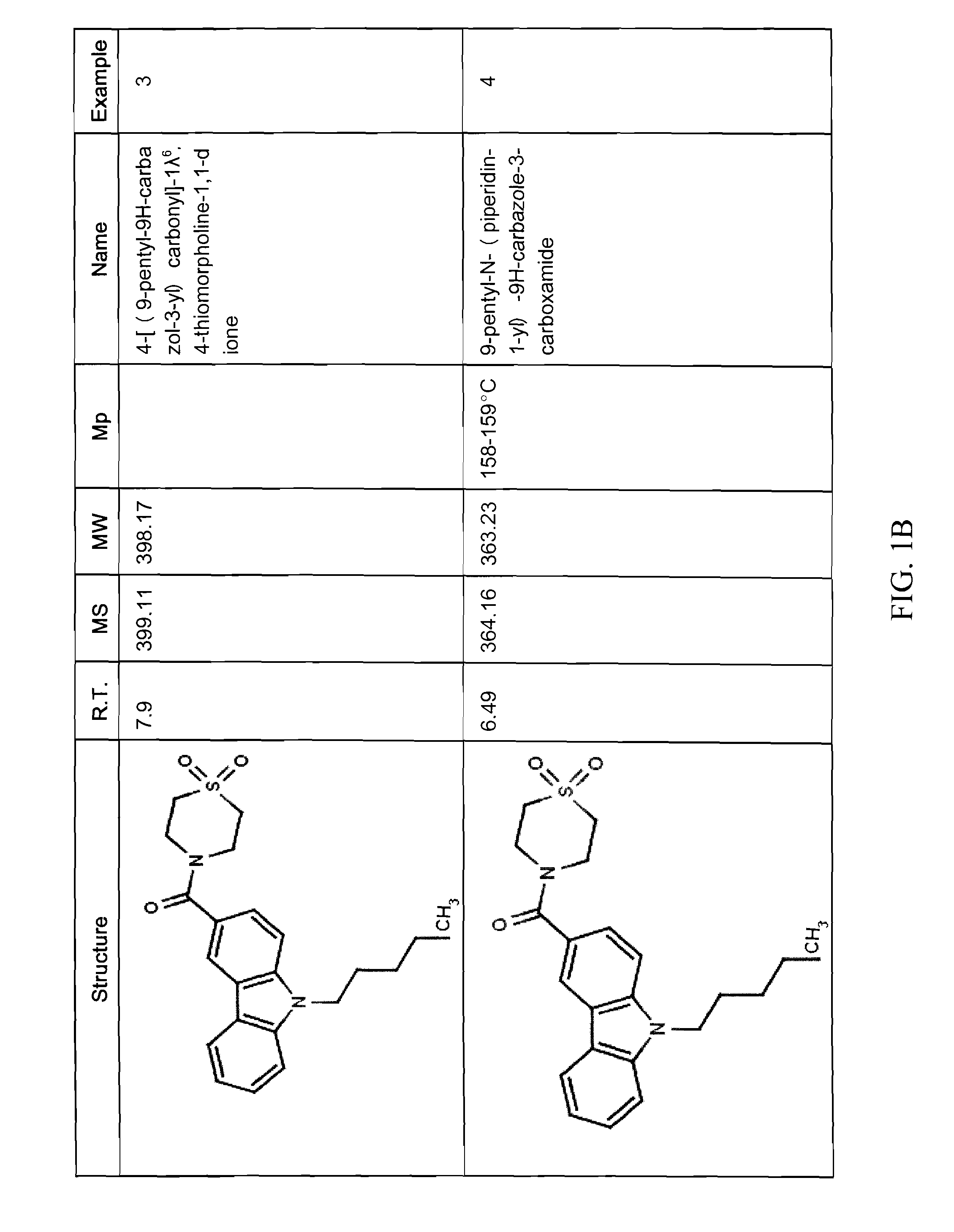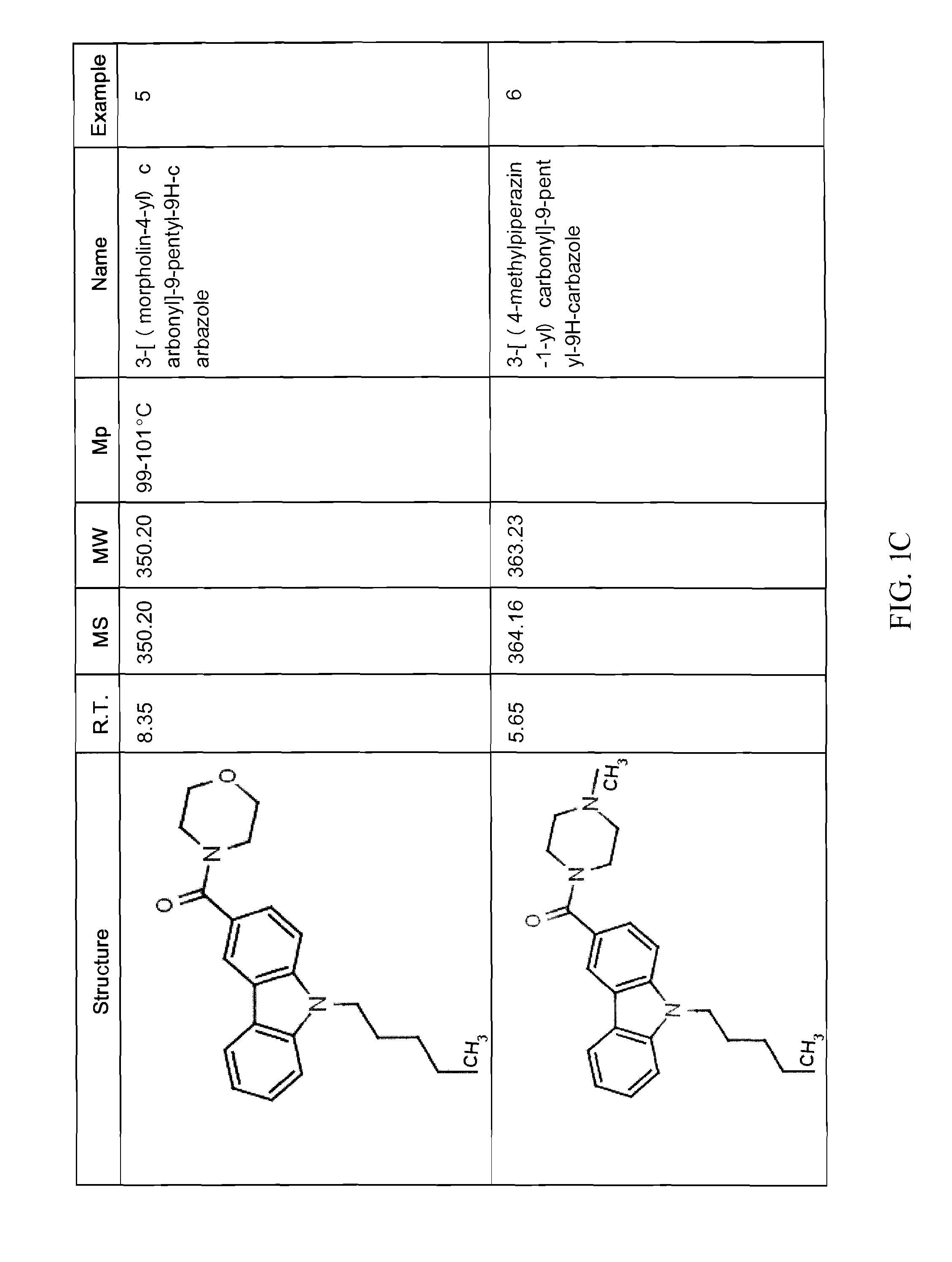Novel Tricyclic Modulators of Cannabinoid Receptors
- Summary
- Abstract
- Description
- Claims
- Application Information
AI Technical Summary
Benefits of technology
Problems solved by technology
Method used
Image
Examples
example 1
(9-pentyl-9H-carbazol-3-yl)(piperidin-1-yl)methanone (Compound 4)
Synthesis of 9-pentyl-9H-carbazole (Compound 1)
[0170]
[0171]Under argon atmosphere, a solution of carbazole (2.5 g, 14.95 mmol), 1-bromopentane (2.225 mL, 17.94 mmol), and Cs2CO3 (7.3 g, 22.41 mmol) in DMF (20 mL) was subjected to microwave irradiation at 140° C. for 1 h. The reaction mixture was cooled, diluted with ethyl acetate (50 mL), and filtered. The organic solvents were evaporated in vacuo. The resultant dark oil was distilled under reduced pressure (125° C., 2 mmHg) to afford the title compound as yellowish oil (3.169 g, 89%).
Synthesis of 9-pentyl-9H-carbazole-3-carbaldehyde (Compound 2)
[0172]
[0173]The title compound was prepared according to a modified literature procedure (Pajda et al., Modern Polymeric Materials for Environmental Applications 129 (2006)) POCl3 (2.6 mL, 28.40 mmol) was added, over a period of 10 min., to an ice-cooled, stirred DMF (7.43 mL, 96 mmol) under nitrogen. The reddish solution was a...
example 2
Synthesis of N,N-diethyl-9-pentyl-9H-carbazole-3-carboxamide (Compound 5)
[0178]
[0179]Using 9H-carbazole-3-carboxylic acid 3 (112 mg, 0.40 mmol) and diethylamine (74 μL, 0.71 mmol) as starting compounds, the title compound was prepared following the procedures described in preparation of compound 4. A colorless viscous oil was obtained. Yield: 44 mg (33%).
example 3
Synthesis of (9-pentyl-9H-carbazol-3-yl)(1,1-dioxo-thiomorpholino)methanone (Compound 6)
[0180]
[0181]Using 9H-carbazole-3-carboxylic acid 3 (115 mg, 0.41 mmol) and 1,1-dioxo-thiomorpholine (80 mg, 0.59 mmol) as starting compounds, the title compound was prepared following the procedures described in preparation of compound 4. A yellowish glass was obtained. Yield: 83 mg, (51%).
PUM
| Property | Measurement | Unit |
|---|---|---|
| Weight | aaaaa | aaaaa |
Abstract
Description
Claims
Application Information
 Login to View More
Login to View More - R&D
- Intellectual Property
- Life Sciences
- Materials
- Tech Scout
- Unparalleled Data Quality
- Higher Quality Content
- 60% Fewer Hallucinations
Browse by: Latest US Patents, China's latest patents, Technical Efficacy Thesaurus, Application Domain, Technology Topic, Popular Technical Reports.
© 2025 PatSnap. All rights reserved.Legal|Privacy policy|Modern Slavery Act Transparency Statement|Sitemap|About US| Contact US: help@patsnap.com



